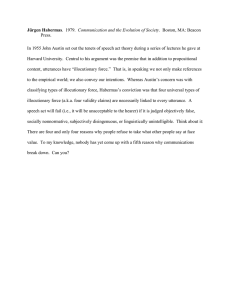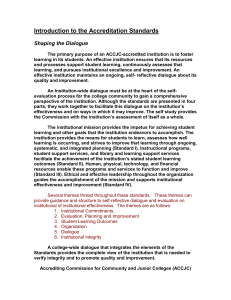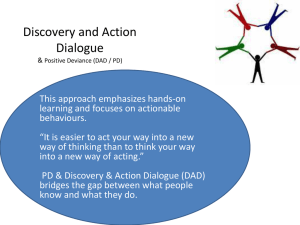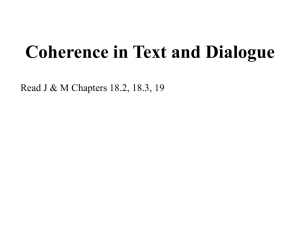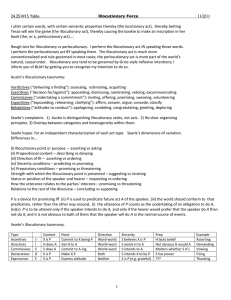Speech acts and dialogue exercises Semantics and Pragmatics
advertisement
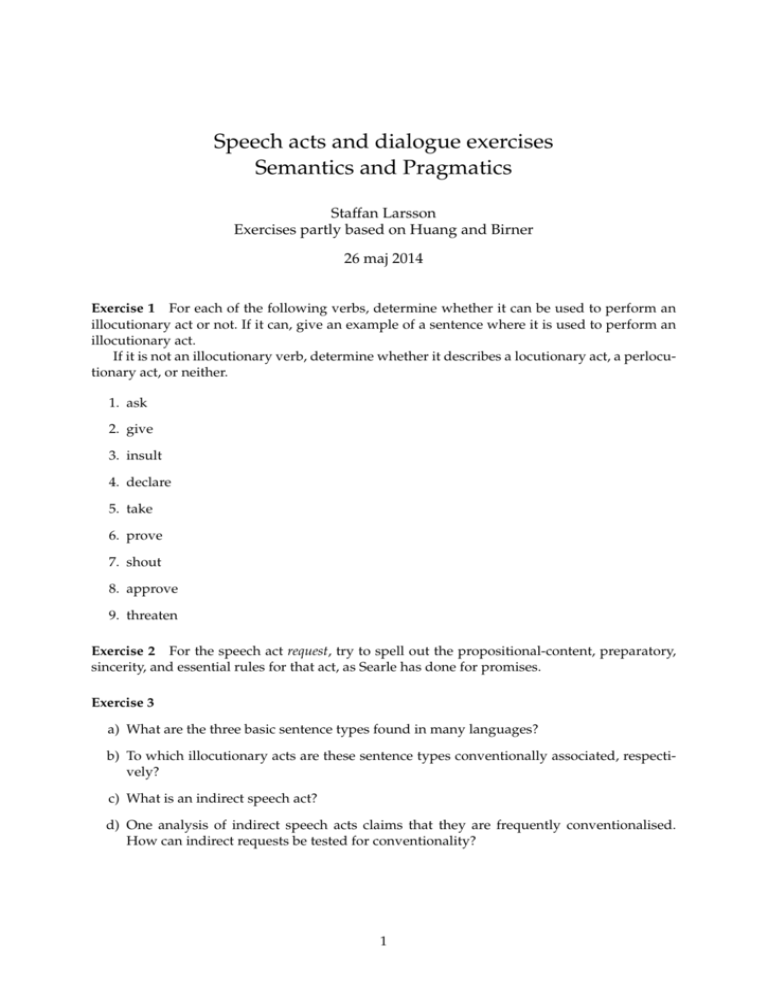
Speech acts and dialogue exercises Semantics and Pragmatics Staffan Larsson Exercises partly based on Huang and Birner 26 maj 2014 Exercise 1 For each of the following verbs, determine whether it can be used to perform an illocutionary act or not. If it can, give an example of a sentence where it is used to perform an illocutionary act. If it is not an illocutionary verb, determine whether it describes a locutionary act, a perlocutionary act, or neither. 1. ask 2. give 3. insult 4. declare 5. take 6. prove 7. shout 8. approve 9. threaten Exercise 2 For the speech act request, try to spell out the propositional-content, preparatory, sincerity, and essential rules for that act, as Searle has done for promises. Exercise 3 a) What are the three basic sentence types found in many languages? b) To which illocutionary acts are these sentence types conventionally associated, respectively? c) What is an indirect speech act? d) One analysis of indirect speech acts claims that they are frequently conventionalised. How can indirect requests be tested for conventionality? 1 Exercise 4 Which of the following sentences would normally be considered indirect speech acts? 1. Open the window! 2. Can you shut the door when you leave? 3. (At a fitness club): Please shower before entering the pool. Please observe pool rules located at poolside. You are advised against swimming alone. 4. Why dont we go to the nice Italian restaurant near the museum? 5. Once again, we respectfully request that you return your verified sketch by June 27. 6. I hereby apologize sincerely for my rude behaviour last night. 7. Sorry! Exercise 5 The utterance is the basic unit of analysis in dialogue modelling. Describe two ways in which utterances in dialogue may be non-sentential (i.e. not correspond to grammatical sentences). Give examples. Exercise 6 What is the grounding criterion (Clark)? Exercise 7 Which four levels of action in dialogue are distinguished by Clark and Allwood? Describe approximately the actions on each level. Exercise 8 Briefly describe three ways in which the DAMSL taxonomy of dialogue acts differs from Searle’s speech act taxonomy. Exercise 9 What are the respective functions of forward-looking and backward-looking dialogue acts in DAMSL? Exercise 10 In DAMSL, utterances are analysed with respect to information level. Name at least two of the three information levels distinguished by DAMSL. 2 Huang, Yan (2007) Pragmatics. Oxford Textbooks in Linguistics. This page is intentionally blank.
